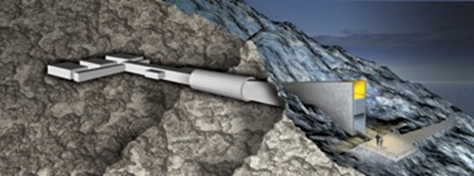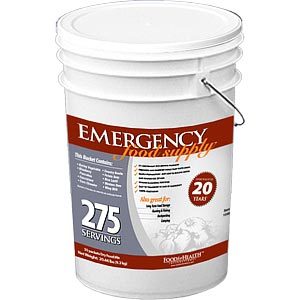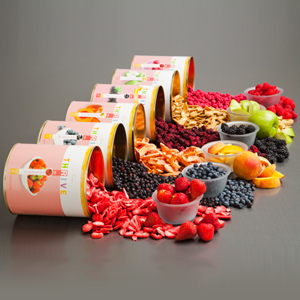Thanksgiving eve, Sam and I went to see The Road, a story of a father and son as they travel the barren remains of the Northeast in a post apocalyptic world. There is no sunlight or clear sky the entire movie - the landscape is relentlessly grey and charred. Nothing grows. Anything edible remains from the previous civilization with the exception of human meat. It is grim and terrifying.
After being immersed in this terrain for 2 hours, we stopped into the supermarket next door to the theatre. It was like discovering new world - not only the vibrant colors of the food (reds, greens, orange, purple) but the selection was astounding. The deprivation in The Road had been so complete, the overabundance in our world was startling.
Thursday night we saw Book of Eli, another movie in the post-apocalyptic genre, where one is either prey or predator. Survival depends on this alone. Cannibalism, understandably, featured prominently in both stories. In The Road, Viggo Mortenson survives on the canned foods he discovers from time to time (even stumbling onto what is probably mankind's last can of Coke). Book of Eli, set in 2043, takes place 30 years after the 'event', and does not identify food sources (outside of birds, feral cats or human flesh). There is however, a secret clean water source, the key to power for a regional ruling bad guy.
Other recent movies with no Whole Foods Market? Terminator/Salvation, set in 2018, depicts a devastated planet, but apparently, one still capable of limited agriculture. In one scene, a small band of survivors offer fresh carrots to a young girl. Beyond that, it is not clear where anyone's food comes from. I Am Legend (a remake of Last Man on Earth and The Omega Man), set in 2012, is a deserted world but for a small number of solitary survivors and untold numbers of zombie like victims of the plague that destroyed everyone else. Will Smith has a full larder from better times and goes on occasional hunting expeditions for meat in midtown.
Caterer/farmer/mother-home cook/science fiction devotee, I can't shut off my food filter. It is always only about eating. Strip away the trappings of the last few centuries, return to the pre-industrial hostile wilderness and it is about survival - and eating is key to human survival.
I googled Post-Apocalyptic Food and discovered a few things. For starters, Costco has a selection of very heavy-duty survival rations, some with a 20-year shelf life. Perhaps the post-9/11 world recognizes that disastrous outcomes are not science fiction. We have all been instructed to stock our homes with adequate water and canned goods for a week should there be a potential 'disruption', but how would an entire society feed itself in the event of global disaster.
Basic preparation will impact the probability of your family's survival in an emergency. Delicious and easy to prepare. Each bucket contains 275 servings of pre-mixed and pre-seasoned 100% vegetarian and vitamin fortified food. With a 20 year long shelf life, this kit is perfect for the preparation of natural disasters such as hurricanes, tornadoes, earthquakes or even for a camping or hunting trip.
* Easy to Prepare
* Must have water and a heat source
* 275 Servings
* All Meals 100% Vegetarian and Vitamin Fortified
* Sealed in convenient Weather-Proof bucket for easy transport
* 25 Servings - Potato Soup
* 30 Servings - Corn Chowder
* 25 Servings - Cacciatore
* 25 Servings - Western Stew
* 30 Servings - Country Noodle
* 25 Servings - Rice Lentil
* 45 Servings - Whey Milk
* 40 Servings - Blueberry Pancake
* 30 Servings - Barley Vegetable
* Total Weight: 23 lbs.
The Date of Manufacturing is printed on each individual packet. The Expiration Date for all the food is printed on a sticker on the outside of the bucket.
For best taste and nutritional value, use product before:
20 years of manufacturing date when stored at 60° F (16.6° C)
10 years of manufacturing date when stored at 70° F (21.1° C)
And then there is The Svalbard Global Seed Vault, which was officially opened in early 2008. Seeds from the wild as well as farmers seeds have been identified and stored, to protect future biodiversity. Seems to me there is another role for the seed vault in the aftermath of a world cataclysm.
The Svalbard Global Seed Vault is the ultimate protection for the world's agricultural biodiversity, and is therefore built to stand the test of time. Put simply, a tunnel has been excavated into the side of a frozen mountain. The facility has only one entrance, and a robust security door and airlock separate the entrance area from the seed repository itself.

In order to maintain the temperature below -10°C, cold Arctic air is drawn into the Vault during the winter, automatically and without human intervention. The surrounding rock maintains the temperature requirements during the extremely cold season, and during relatively warmer periods refrigeration equipment are engaged. However, in the event of an equipment failure, temperatures in the Vault would not rise above approximately -3.5°C, and would, in fact, take months to warm even to that level. This would be perfectly adequate for seed conservation for many, many years. The inside of the seed storage area is lined with insulated panels (in addition to the thick concrete wall) to help maintain the cold temperatures. Electronic transmitters linked to a satellite system monitor the temperature and send this information back to the appropriate authorities at Longyearbyen and at NordGen, which provides the technical expertise for managing the Seed Vault.
The remote location, as well as the rugged structure, provides unparalleled security for the world's agricultural heritage, and the facility is also equipped with motion detectors and CCTV. The polar bears which prowl the area provide one extra layer of security.
The Seed Vault, with its combination of natural and mechanical cooling systems and safe, remote location, is designed to provide a service that no other genebank can offer, and which will function effectively centuries into the future.
Contemplating a world without food is not reserved for the realm of science fiction movie making or post-apocalyptic scenarios alone. Feeding the exploding human population, especially in third world countries, is a political 'hot potato. ' And tragedies that befall isolated communities - New Orleans and now Haiti - draw our attention to the fact that access to food is second only in importance to air or clean water. We are fortunate to think about what our next meal will be, but not whether it will be.
Contemplating a fictional post-cataclysm world, wondering about soil quality for growing, or the gruesome alternative of cannibalism, or even the absurdity of finding the world's last Coke, is first rate escapism that below the surface, hits very close to home. The remote future could unfold tomorrow and there is no better source of fiction then reality.


